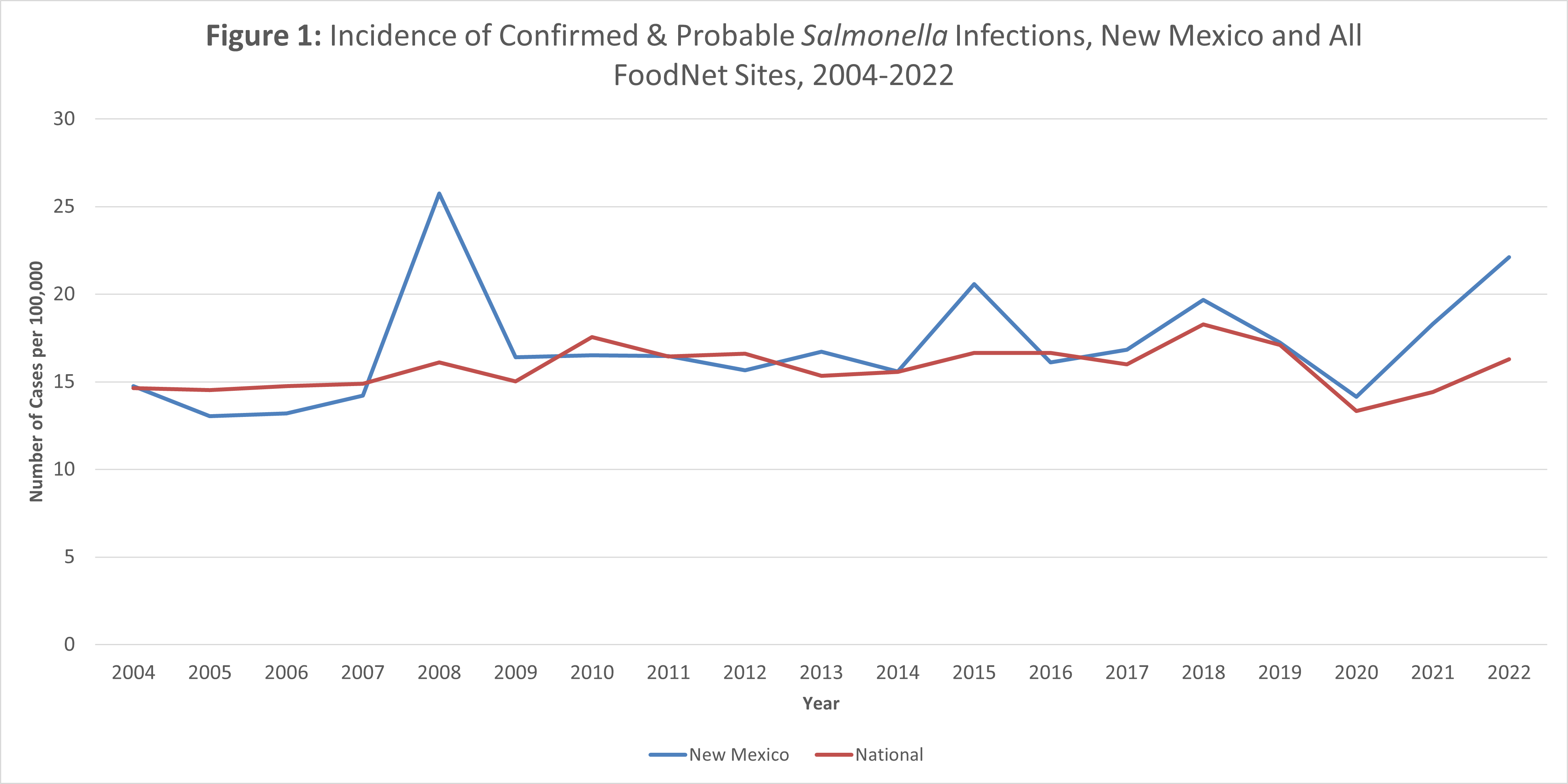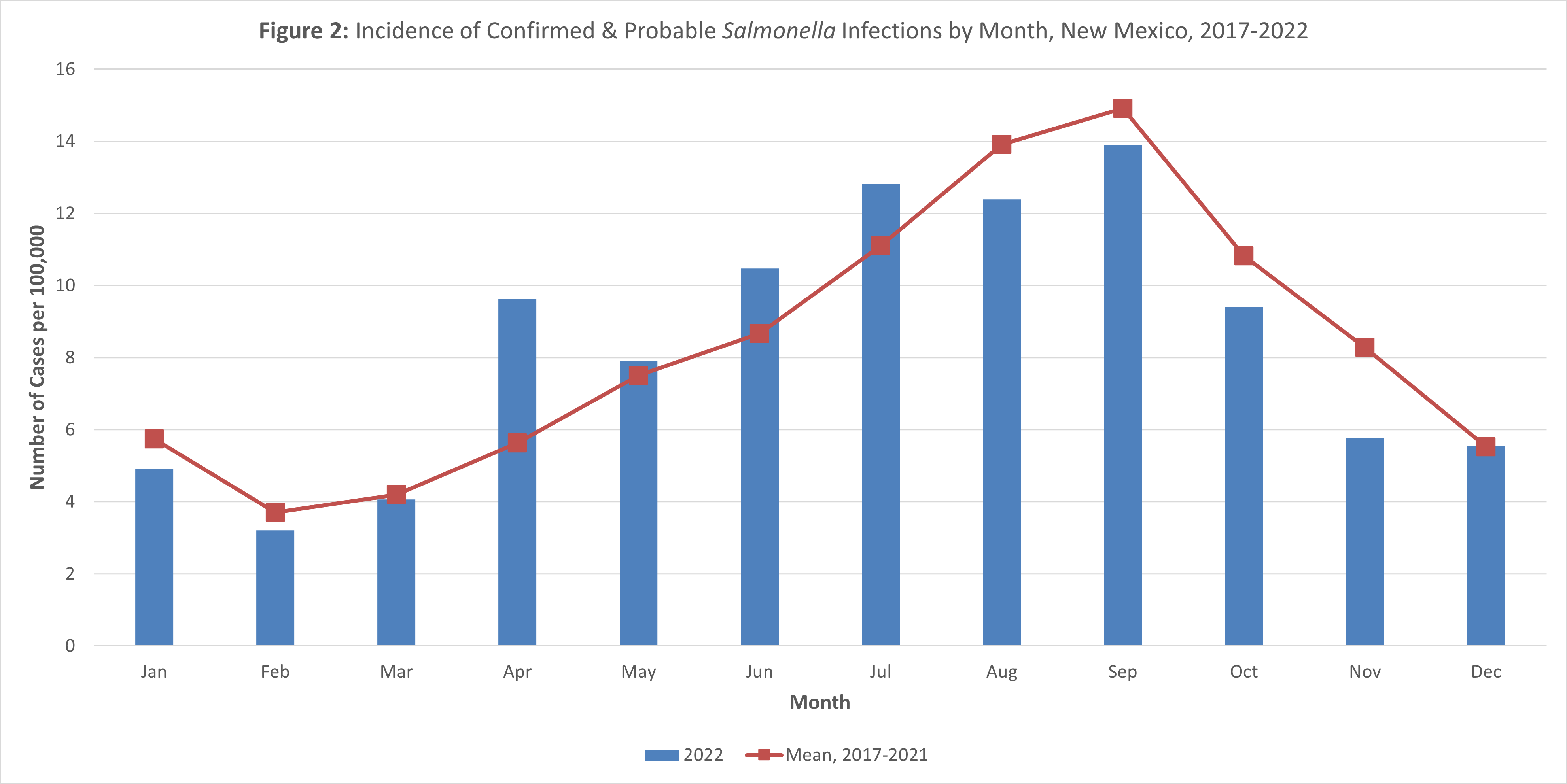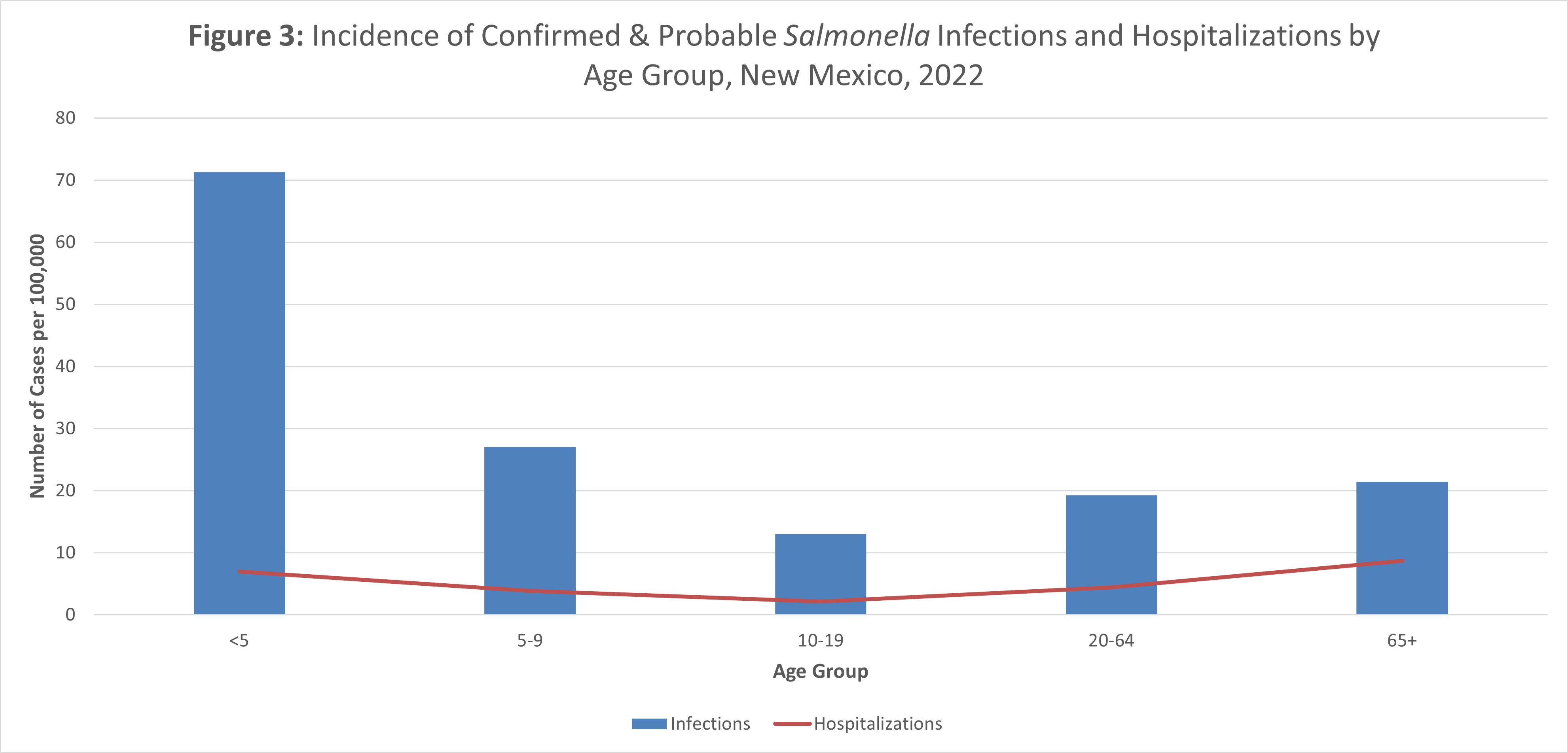Salmonella
Salmonellosis is caused by a group of bacteria called Salmonella. Salmonella serotypes typhimurium and enteritidis are the most common in the United States. Infected persons develop diarrhea, fever, and abdominal cramps 6 hours - 6 days after infection. Illness usually lasts less than one week and most people recover without treatment. Antibiotics may actually increase the amount of time the bacteria is excreted in the feces of the infected person. However, in some persons the infection may spread from their intestines to the blood stream and throughout the body. If this happens, death may result unless the person is treated promptly with antibiotics. The elderly, infants, and those with impaired immune systems are more likely to have severe illness.
Salmonellosis usually results from handling or eating undercooked or raw eggs, milk, meat, poultry, and other animal products. Outbreaks in New Mexico have also been associated with consuming fresh produce and handling pet chicks. New Mexico had 49 outbreaks of salmonellosis identified in 2022.
Salmonella Infection in New Mexico and the United States
Active, population-based surveillance for Salmonella has been conducted throughout New Mexico since 2004 as part of the New Mexico Emerging Infections Program (NMEIP) FoodNet system. Medical records for residents of New Mexico with salmonellosis are reviewed for demographic and other epidemiologic information. Through this surveillance system New Mexico EIP is able to examine and describe Salmonella infections in the state. Data from New Mexico and other EIP FoodNet sites are aggregated by the Centers for Disease Control and Prevention to generate national estimates.
In 2022, salmonellosis was the second most commonly identified bacterial foodborne disease in New Mexico with 468 cases. Figure 1 shows, except in 2008 and 2015 when New Mexico experienced multiple outbreaks of salmonellosis, the incidence has been steady in both the United States and New Mexico, with annual rates well above the Healthy People 2030 objective of 11.5 cases per 100,000 population. Cases occurred year round, with more cases during the summer months (Figure 2). As with other enteric infections, the incidence was highest among young children (Figure 3).
Data are from New Mexico FoodNET cases and may slightly differ from those reported to the National Notifiable Diseases Surveillance System (NNDSS). Case data for 2023 are still being finalized, making 2022 the most current information available. Please visit the New Mexico Infectious Disease Data page for additional data.




